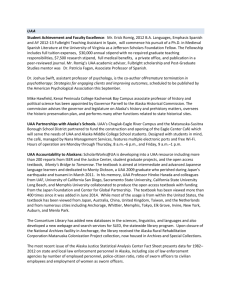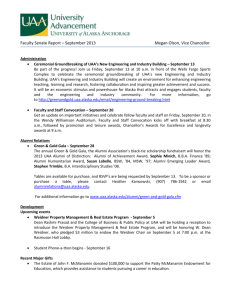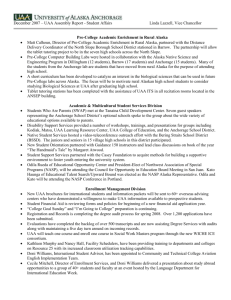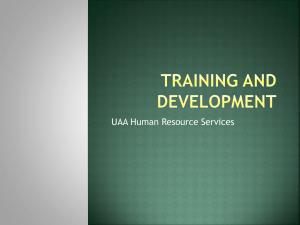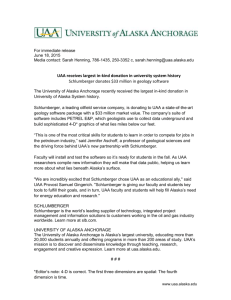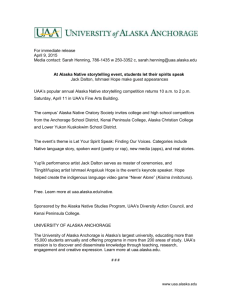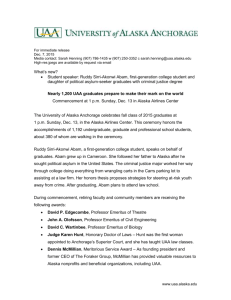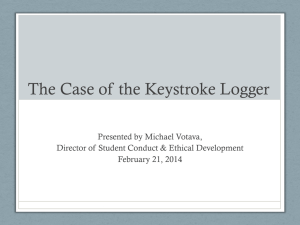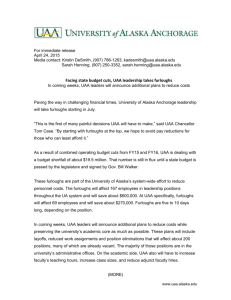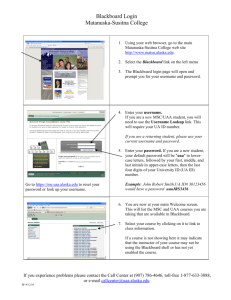What YOU can do to make UAA a more Sustainable University
advertisement
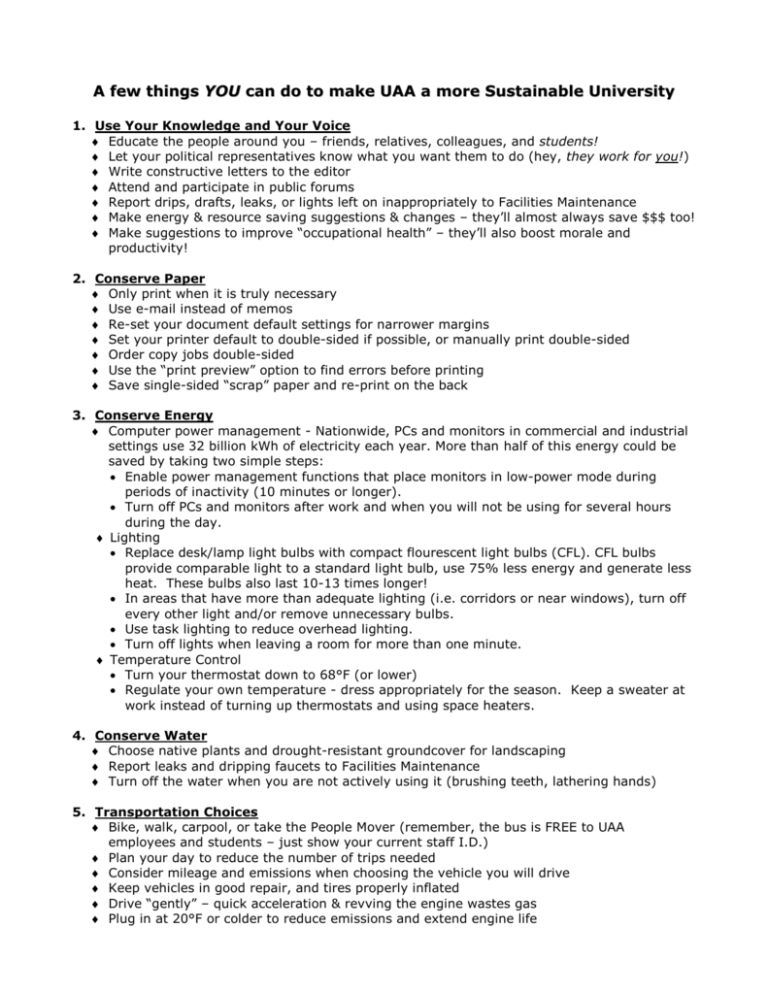
A few things YOU can do to make UAA a more Sustainable University 1. Use Your Knowledge and Your Voice Educate the people around you – friends, relatives, colleagues, and students! Let your political representatives know what you want them to do (hey, they work for you!) Write constructive letters to the editor Attend and participate in public forums Report drips, drafts, leaks, or lights left on inappropriately to Facilities Maintenance Make energy & resource saving suggestions & changes – they’ll almost always save $$$ too! Make suggestions to improve “occupational health” – they’ll also boost morale and productivity! 2. Conserve Paper Only print when it is truly necessary Use e-mail instead of memos Re-set your document default settings for narrower margins Set your printer default to double-sided if possible, or manually print double-sided Order copy jobs double-sided Use the “print preview” option to find errors before printing Save single-sided “scrap” paper and re-print on the back 3. Conserve Energy Computer power management - Nationwide, PCs and monitors in commercial and industrial settings use 32 billion kWh of electricity each year. More than half of this energy could be saved by taking two simple steps: Enable power management functions that place monitors in low-power mode during periods of inactivity (10 minutes or longer). Turn off PCs and monitors after work and when you will not be using for several hours during the day. Lighting Replace desk/lamp light bulbs with compact flourescent light bulbs (CFL). CFL bulbs provide comparable light to a standard light bulb, use 75% less energy and generate less heat. These bulbs also last 10-13 times longer! In areas that have more than adequate lighting (i.e. corridors or near windows), turn off every other light and/or remove unnecessary bulbs. Use task lighting to reduce overhead lighting. Turn off lights when leaving a room for more than one minute. Temperature Control Turn your thermostat down to 68°F (or lower) Regulate your own temperature - dress appropriately for the season. Keep a sweater at work instead of turning up thermostats and using space heaters. 4. Conserve Water Choose native plants and drought-resistant groundcover for landscaping Report leaks and dripping faucets to Facilities Maintenance Turn off the water when you are not actively using it (brushing teeth, lathering hands) 5. Transportation Choices Bike, walk, carpool, or take the People Mover (remember, the bus is FREE to UAA employees and students – just show your current staff I.D.) Plan your day to reduce the number of trips needed Consider mileage and emissions when choosing the vehicle you will drive Keep vehicles in good repair, and tires properly inflated Drive “gently” – quick acceleration & revving the engine wastes gas Plug in at 20°F or colder to reduce emissions and extend engine life 6. Purchasing Choices Buy office equipment with the “Energy Star” label (Energy Star products meet or exceed the EPA’s energy efficiency criteria) Choose products made from recycled materials (especially paper!) Buy from environmentally and socially-responsible companies Buy organic cotton clothing; request that the Bookstore and other merchants carry it 7. Food Choices Choose organic foods whenever possible; request that food vendors carry them Request that non-organic fruits and vegetables be certified “residue free” Choose “Shade Grown, Bird Friendly, Fair Trade” certified coffee; request that coffee vendors carry it Request environmentally responsible catering 8. Reduce Exposure to Toxins and Irritants Check with Facilities and Campus Services to be sure your building’s ventilation system is working properly Post “Do Not Idle Vehicles” and “No Smoking” signs near your building’s air intake Don’t microwave food in plastic containers Dispose of hazardous materials properly – if you need specific information contact UAA Environmental Health & Safety Choose low-VOC carpet, paint, drapes, furniture upholstery, etc. Choose “least-toxic” alternatives for cleaning supplies Eliminate or greatly reduce use of pesticides; use “least-toxic” or non-toxic alternatives Choose “non-toxic” office supplies whenever possible. Unless specified as non-toxic, carbonless copy paper, white-out, permanent markers, dry-erase markers, many glues, etc. contain toxic, volatile chemicals. Don’t use aerosol sprays or volatile substances (glues, paints, etc.) indoors Be considerate of the many people who have chemical sensitivities (including sensitivity to perfumes / colognes) 9. Reduce Waste Request lower-impact dining ware / packaging from food vendors Use your own reusable coffee mug and other beverage / food containers and cutlery Choose “low-packaging” alternatives Reconsider whether you actually need what your are about to use 10.Recycle Contact USUAA’ Recycling Program to have office paper, mixed paper, and cardboard picked up in from your office on Fridays Recycle toner cartridges, aluminum, and plastic bottles in your office Encourage responsible expansion of UAA’s recycling program Choose products made from recycled materials Resources: Environmental Health & Safety: 786-1351 / trig@uaa.alaska.edu / http://ehsrms.uaa.alaska.edu Facilities Maintenance: 786-6980 / http://edit.uaa.alaska.edu/fcs/ USUAA Recycling: 786-1205 / http://recycle.uaa.alaska.edu/ “Every person is an activist whether we realize it or not, because every choice we make changes the world. It is up to us to decide to be activists for healing or for suffering, for creating or for destroying.” - Julia Butterfly Hill Printed on 100% post-consumer waste, processed chlorine free
